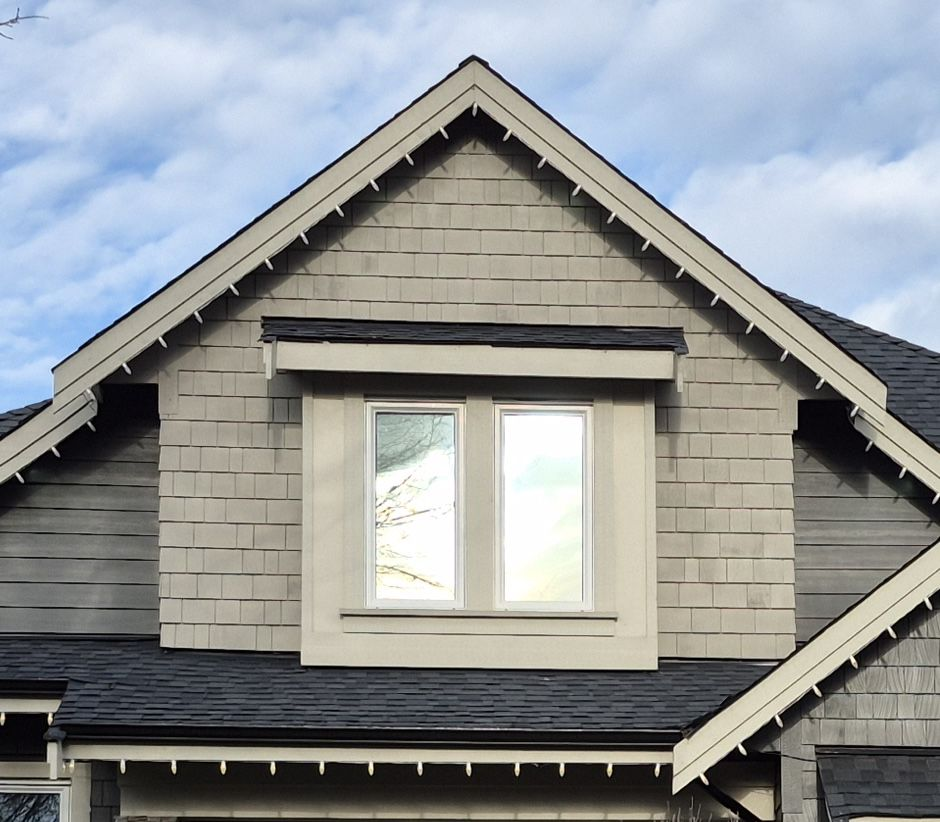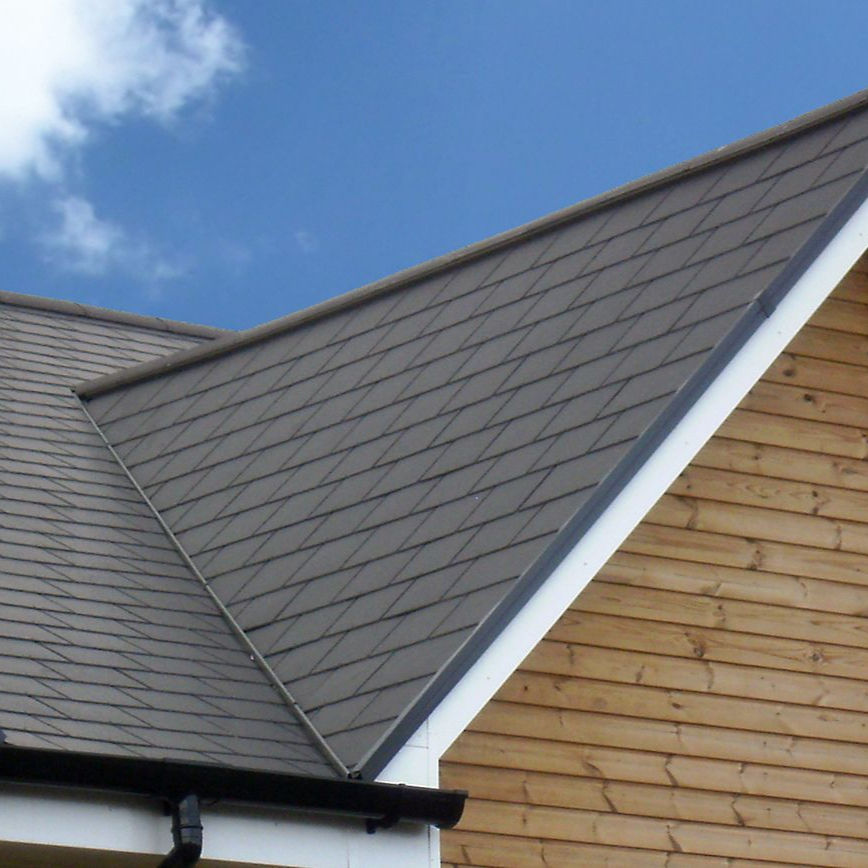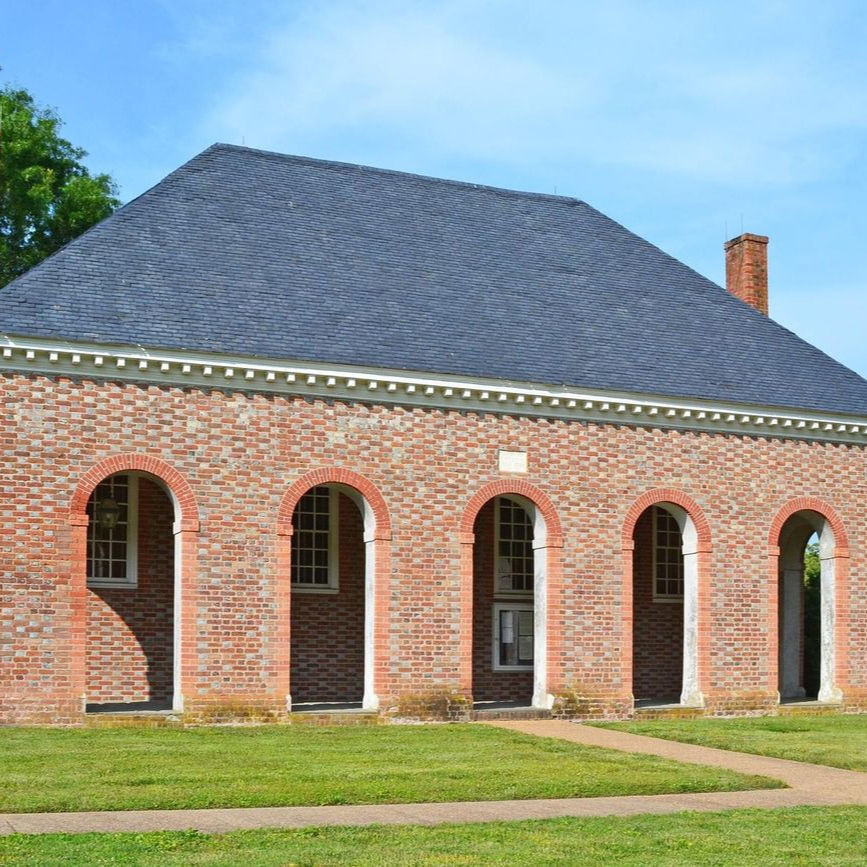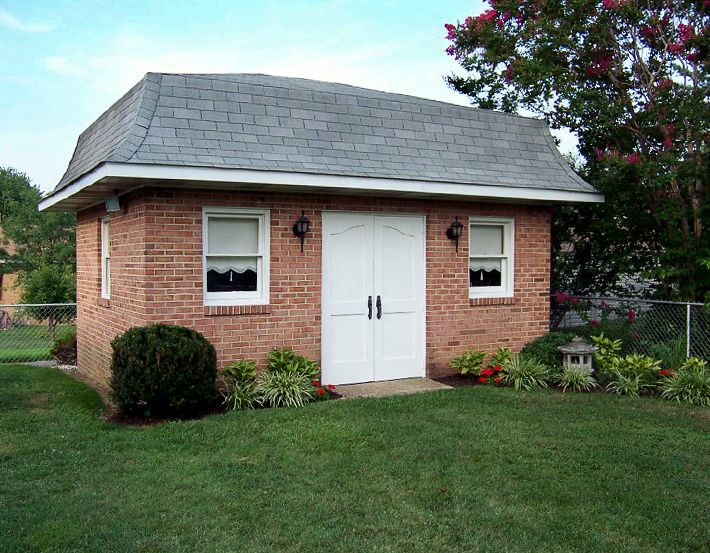Understanding Gable and Hip Roof Differences
- Staff Desk
- Feb 18
- 12 min read

When planning for a new roof or a home renovation, one of the pivotal decisions is choosing the right roof style. Two of the most common styles are gable roofs and hip roofs. Each design has its own set of advantages and disadvantages, and understanding these can help you make an informed decision. This article will delve into the differences between gable and hip roofs, providing a clear comparison to help you select the best option for your home.
What is a Gable Roof?

A gable roof is a classic design characterized by two sloping sides that meet at a ridge, forming a triangular shape at each end. This structure is often referred to as a pitched or peaked roof and is one of the simplest and most popular roof styles worldwide.
Architectural Features of Gable Roofs
The distinct triangular shape of gable roofs is not only aesthetically pleasing but also functionally beneficial. This design allows for efficient water runoff, reducing the risk of leaks and structural damage. The steep slopes also create a natural ventilation system, which can help regulate temperatures within the home.
Gable roofs can be constructed using various materials, including shingles, metal, and tiles. The choice of materials can influence both the cost and the durability of the roof. Additionally, the pitch of the roof can be adjusted to suit different climates and aesthetic preferences, offering versatility in design.
Historical Context and Popularity
Gable roofs have been a staple in architecture for centuries, with their origins tracing back to ancient Greece and Rome. Their simple yet effective design has stood the test of time, making them a popular choice in various cultures and regions. This widespread popularity is due in part to the ease of construction and the ability to blend with numerous architectural styles.
In modern times, gable roofs continue to be favored for both residential and commercial buildings. Their classic appearance complements a variety of home designs, from traditional to contemporary. The adaptability of gable roofs has ensured their continued relevance in the ever-evolving world of architecture.
Customization and Adaptability
One of the key advantages of gable roofs is their adaptability to different architectural styles and personal preferences. Homeowners can choose from a range of pitches, materials, and finishes to create a unique look that enhances their home's overall appeal. Whether you prefer a steep, dramatic pitch or a gentle slope, gable roofs can accommodate your vision.
Gable roofs also offer opportunities for additional features, such as dormers or skylights, which can enhance both the functionality and aesthetic of the home. These customizations allow homeowners to create a roof that not only serves its practical purpose but also adds character and value to the property.
Advantages of Gable Roofs

Gable roofs offer several benefits that make them an attractive choice for many homeowners. Understanding these advantages can help you determine if a gable roof is the right fit for your needs.
Cost-Effectiveness
Gable roofs are generally more affordable than hip roofs due to their simpler design and ease of construction. The straightforward structure requires less material and labor, making it a budget-friendly option for many homeowners.
The simplicity of gable roofs means that they can be built quickly and efficiently, reducing both the time and cost of construction. This makes them an ideal choice for homeowners looking to save on initial building expenses without sacrificing quality.
Moreover, the reduced complexity of gable roofs means fewer materials are required, further lowering costs. This cost-effectiveness extends to maintenance as well, as repairs are typically simpler and less expensive compared to more complex roof designs.
Efficient Water Drainage
The steep pitch of a gable roof allows rain, snow, and debris to slide off easily, reducing the risk of leaks and water damage. This feature is particularly beneficial in regions with heavy rainfall or snowfall.
Efficient water drainage helps prevent the buildup of moisture, which can lead to mold, mildew, and structural damage. By facilitating quick runoff, gable roofs protect the integrity of the home and minimize the need for costly repairs.
In areas prone to heavy precipitation, the design of gable roofs can be a crucial factor in ensuring the longevity and durability of the structure. The ability to handle large amounts of water effectively makes gable roofs a practical choice for various climates.
Extra Attic Space
The triangular shape of a gable roof provides additional attic or loft space, which can be used for storage or converted into extra living space. This additional space can be a valuable asset for homeowners looking to maximize their home's functionality. Whether used for storage, a home office, or an extra bedroom, the extra space created by a gable roof can enhance the versatility of the home.
Moreover, the attic space can be easily accessed and utilized, making it a convenient option for homeowners. The potential for additional living areas adds value to the property and can be an attractive feature for potential buyers.
Versatile Design Options
Gable roofs can accommodate various architectural styles and can be customized with different pitches, materials, and finishes to suit your home's aesthetic. The versatility of gable roofs allows homeowners to tailor the design to match their personal preferences and the overall style of the home. Whether you prefer a traditional look or a more modern aesthetic, gable roofs can be adapted to meet your vision.
This adaptability extends to the choice of materials, allowing homeowners to select options that best suit their needs and budget. From classic shingles to sleek metal finishes, gable roofs offer a range of possibilities for creating a distinctive and appealing look.
Disadvantages of Gable Roofs

While gable roofs offer numerous benefits, they also come with certain drawbacks that homeowners should consider before making a decision.
Vulnerability to Wind Damage
Gable roofs can be more susceptible to wind damage, especially in areas prone to hurricanes or strong winds. The open ends of the triangular design may catch the wind, potentially leading to roof failure if not properly braced.
In regions with frequent high winds, gable roofs may require additional reinforcement to ensure stability and prevent damage. This can increase construction costs and complicate the building process.
Homeowners should consider the local climate and weather patterns when deciding on a roof style. In areas with high wind risk, alternative designs or additional bracing may be necessary to safeguard the home.
Limited Overhang Protection
Gable roofs may offer limited protection to the walls and foundation from rain runoff due to shorter overhangs. This can be mitigated with gutters and proper drainage systems.
The shorter overhangs of gable roofs mean that rainwater can more easily reach the walls and foundation, potentially leading to water damage. Proper drainage solutions, such as gutters and downspouts, are essential to prevent these issues.
Homeowners should carefully plan their drainage systems to ensure adequate protection for the home. By addressing potential runoff challenges, the longevity and integrity of the building can be maintained.
Potential for Structural Issues
While gable roofs are generally stable, improper construction or inadequate materials can lead to structural issues over time. Regular maintenance and inspections are crucial to identify and address any potential problems.
Ensuring that the roof is constructed with high-quality materials and by skilled professionals can help minimize the risk of structural issues. Regular maintenance, such as checking for leaks or damage, is essential to prolong the life of the roof.
Homeowners should be proactive in maintaining their gable roof to ensure its continued performance and reliability. By addressing issues promptly, costly repairs or replacements can be avoided.
What is a Hip Roof?

A hip roof, also known as a hipped roof, features four sloping sides that converge at the top, forming a ridge. Unlike a gable roof, all sides of a hip roof slope downward to the walls, providing a more stable and self-bracing structure.
Architectural Characteristics of Hip Roofs
The design of hip roofs is characterized by its four-sided slope, which offers a balanced and symmetrical appearance. This structure provides a natural resistance to wind, making it ideal for areas with frequent storms or strong winds.
Hip roofs can be constructed using a variety of materials, such as asphalt shingles, tiles, or metal. The choice of materials can impact the overall cost, durability, and appearance of the roof, allowing for customization to suit individual preferences. The inward slope of all four sides creates a self-bracing structure, reducing the need for additional support. This inherent stability makes hip roofs a reliable choice for various building types and weather conditions.
Historical Significance and Modern Use
Hip roofs have a rich history, with their origins dating back to ancient civilizations. They have been used in various architectural styles, from classic to contemporary, showcasing their versatility and timeless appeal.
In modern architecture, hip roofs are often favored for their elegant and sophisticated appearance. Their symmetrical design complements a range of home styles, enhancing curb appeal and adding value to the property.
The enduring popularity of hip roofs can be attributed to their combination of aesthetic appeal and functional benefits. Homeowners and architects alike appreciate the balance and harmony that hip roofs bring to a building's design.
Variations and Customization
Hip roofs offer a range of design variations, allowing for customization to suit different architectural styles and personal preferences. Options such as the half-hip roof, cross-hip roof, or Dutch gable roof provide unique alternatives to the traditional hip roof design.
These variations can enhance both the visual appeal and functionality of the roof, offering opportunities for additional features such as dormers or skylights. Homeowners can choose from a variety of materials and finishes to create a distinctive look that complements their home's overall design.
The ability to customize hip roofs makes them a versatile option for homeowners looking to create a roof that reflects their individual style and meets their specific needs.
Advantages of Hip Roofs

Hip roofs offer several benefits that make them an attractive choice for many homeowners. Understanding these advantages can help you determine if a hip roof is the right fit for your needs.
Stability and Durability
The inward slope of all four sides makes hip roofs highly stable and durable. They can withstand strong winds and heavy snow loads better than gable roofs, making them ideal for regions with extreme weather conditions.
This inherent stability reduces the risk of wind damage, providing peace of mind for homeowners in storm-prone areas. The design of hip roofs ensures that they remain secure and intact, even in challenging weather conditions.
The durability of hip roofs means they require less frequent repairs and maintenance, contributing to their long-term value. Homeowners can rely on the lasting performance of a hip roof to protect their home for years to come.
Improved Overhang Protection
Hip roofs typically have larger overhangs, which provide better protection to the walls and foundation from rain runoff. This can help prevent water damage and improve the longevity of the building.
The extended overhangs of hip roofs act as a shield, directing rainwater away from the home and reducing the risk of water infiltration. This feature is particularly beneficial in areas with heavy rainfall, where water damage can be a significant concern.
By offering superior protection against the elements, hip roofs contribute to the overall resilience and longevity of the home. This added layer of defense can enhance the building's durability and value.
Aesthetic Appeal
The symmetrical design of hip roofs adds a touch of elegance and sophistication to any home. They are often seen in modern and contemporary architectural styles, enhancing curb appeal.
The balanced proportions of hip roofs create a harmonious and visually pleasing appearance that can elevate the overall look of the home. This aesthetic appeal is a key factor in their popularity among homeowners and architects alike.
Hip roofs can be tailored to suit various design preferences, from traditional to modern, offering flexibility in achieving the desired look. The combination of form and function makes hip roofs an attractive option for enhancing the beauty and value of a property.
Consistent Eaves
With eaves running around the entire perimeter, hip roofs offer a consistent look and provide opportunities for additional attic ventilation. The uniform eaves of hip roofs contribute to their cohesive and polished appearance, adding to their aesthetic appeal. This consistency also provides practical benefits, such as improved ventilation and natural light access.
Additional attic ventilation can help regulate temperatures within the home, improving energy efficiency and comfort. The consistent eaves of hip roofs offer both functional and aesthetic advantages, making them a well-rounded choice for homeowners.
Disadvantages of Hip Roofs

While hip roofs offer numerous benefits, they also come with certain drawbacks that homeowners should consider before making a decision.
Higher Construction Costs
Hip roofs are generally more expensive to build due to their complex design and additional materials required. The intricacy of the structure also demands skilled labor, which can increase construction costs.
The complexity of hip roofs means that construction requires more time and expertise, leading to higher labor costs. Homeowners should be prepared for a larger initial investment when choosing a hip roof.
The additional materials needed for hip roofs can also add to the overall cost. This financial consideration is an important factor for homeowners to weigh when deciding on a roof style.
Less Attic Space
The inward sloping design of hip roofs reduces the available attic or loft space compared to gable roofs. This can limit storage options and reduce the potential for extra living space.
Homeowners who prioritize attic space may find the limitations of hip roofs to be a disadvantage. The reduced space can impact the functionality and versatility of the home.
While hip roofs offer other benefits, the trade-off in attic space is an important consideration for those with specific storage or living area needs. Weighing these factors can help determine if a hip roof is the right choice for your home.
Challenging Maintenance
The complex structure of hip roofs can make maintenance and repairs more challenging and costly. Accessing certain areas of the roof may require specialized equipment or professionals.
The intricacy of hip roofs means that identifying and addressing issues can be more difficult and time-consuming. Homeowners should be prepared for potentially higher maintenance costs over the roof's lifespan. Regular inspections and maintenance are essential to ensure the continued performance and durability of a hip roof. Engaging professional services may be necessary to address specific maintenance needs and prevent costly repairs.
Comparing Gable and Hip Roofs

When deciding between a gable and hip roof, consider the following factors:
Climate and Weather Conditions
If you live in an area prone to heavy winds or snow, a hip roof may be the better choice due to its stability and durability. Conversely, a gable roof might be suitable for regions with moderate weather conditions.
The local climate can significantly influence the performance and longevity of a roof. Understanding the weather patterns in your area can help you choose a roof style that offers the best protection and resilience.
Both gable and hip roofs have their strengths and weaknesses in different climates. Evaluating these factors can guide you in selecting a roof that meets the specific demands of your environment.
Budget Considerations
Evaluate your budget to determine which roof style aligns with your financial constraints. Gable roofs are generally more cost-effective, while hip roofs may require a larger investment.
The cost of a roof is a significant factor in the decision-making process. Homeowners should consider both the initial construction costs and long-term maintenance expenses when choosing a roof style.
Balancing budget considerations with desired features and benefits can help you make an informed decision that meets your financial needs and aesthetic preferences.
Architectural Style and Aesthetics
Consider the architectural style of your home and how the roof design will complement it. Both gable and hip roofs offer unique aesthetic advantages, so choose the one that enhances your home's overall appearance.
The roof is a prominent feature of any building, contributing significantly to its overall look and feel. Selecting a roof style that aligns with your home's architecture can enhance its visual appeal and value. Both gable and hip roofs offer versatility in design, allowing for customization to suit different styles. Consider how each roof type will integrate with your home's existing features and aesthetic vision.
Functionality and Space
Assess your need for attic space or additional living areas. A gable roof might provide more usable space, while a hip roof offers better protection and stability.
The functionality of a roof extends beyond its basic protective role. Evaluating your specific needs for space and usability can help determine the most suitable roof style for your home.
Both gable and hip roofs have their advantages in terms of functionality. By prioritizing your needs, you can select a roof that enhances the practicality and livability of your home.
Maintenance and Longevity
Factor in the long-term maintenance requirements and durability of each roof style. While hip roofs may require more complex maintenance, their longevity and resistance to weather damage can be beneficial in the long run.
The maintenance and durability of a roof are crucial considerations for homeowners. Understanding the long-term care requirements of each roof type can help you plan for ongoing maintenance and potential costs.
Both gable and hip roofs have their strengths in terms of longevity and performance. Weighing these factors can help you choose a roof that offers the best balance of durability and maintenance needs for your home.
Conclusion
Choosing between a gable and hip roof involves weighing the pros and cons of each design in relation to your specific needs and preferences. By understanding the differences, you can make an informed decision that enhances your home's functionality, aesthetics, and value. Consider consulting with a roofing professional to assess your options and ensure the best choice for your home.
In conclusion, both gable and hip roofs have their own set of advantages and disadvantages. Whether you prioritize cost, aesthetics, space, or weather resistance, understanding these differences will guide you in selecting the perfect roof for your home. By carefully considering your needs and consulting with experts, you can make a decision that will benefit your home for years to come.